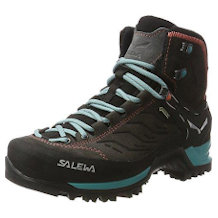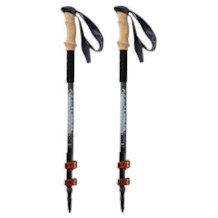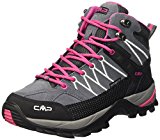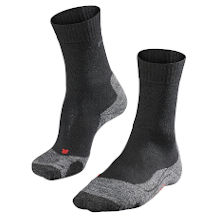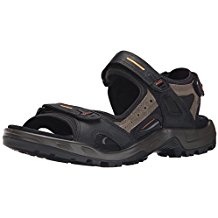Hiking backpack purchasing advice: how to choose the right product
- What You Need to Know
- Hiking backpacks are characterised by robust and durable materials and have practical storage options.
- Depending on the purpose, be it for everyday use, a day trip or multi-day hike, a different volume or load capacity is suitable.
- The strap systems of the backpacks must be adjusted correctly so that the weight of the contents can be carried with the least possible strain on the wearer.
- Special lady packs are adapted to the anatomy of women.
From everyday companion to hiking companion
Hiking is a popular activity in leisure time or on holiday trips. Weekends in the national park to wander through the forest for a few hours, hiking routes lasting several days with overnight stays in tents or huts, or challenging trekking tours in demanding terrain: Hiking has many facets and the equipment you need for it is just as varied. In addition to suitable footwear, for example, a hiking rucksack tailored to the type of hiking tour is also important.
All about the hiking backpack
Weigh up what utensils you will need on your hike and how to stow everything efficiently. On a day hike, too much food or an unnecessarily carried jacket will not be noticed so quickly. On hikes lasting several days, every excess kilogram and forgotten item can become a nuisance.

Size and weight
Hiking backpacks come in many different sizes, from 25 litres for the everyday model to the 90-litre expedition backpack. More contents equals more weight, so you should always take into account that you will be carrying a certain load when planning your hike.
Extra storage space
Also make sure that the backpack opens wide enough for packing. Additional pockets and holders on the outside of the rucksack offer more storage space. For example, drinking bottles can be stored in elastic side pockets and hiking poles can be carried in special straps. In addition, you can attach other small objects such as water bottles or foldable rain jackets using hooks and eyes.
Material and comfort
Most backpacks are breathable, i.e. made of air-permeable materials. This is particularly important on the area close to the body, which is why many hiking backpacks have a ventilated mesh back. This means that you won’t sweat so easily at the back in high temperatures and with great exertion. The back of the backpack is usually also padded, which promises greater carrying comfort.
Hiking backpacks are usually made of nylon because it is hard-wearing and durable. Polyester is also a common material. It is not quite as robust, but it is very light. Leather, on the other hand, is very heavy, but also strong and durable. In many models it is used for reinforcement, for example at the bottom of the backpack. Complete leather backpacks are much more expensive to produce, and they also have the disadvantage that they take a long time to dry.
Strap system promotes correct posture
The straps and harnesses are the be-all and end-all of a backpack, as they have to hold the heavy load and at the same time not be too uncomfortable for the user. A good harness system for hiking backpacks consists of chest, shoulder and hip straps, which not only provide better support, but also improve the posture of the wearer. If the straps are correctly adjusted and worn, they distribute the weight of the backpack optimally and relieve the shoulders or the whole body. The hip belt should not be too narrow. It encloses the pelvic bones and ideally protects them with padding. The chest strap is mainly there to prevent the shoulder straps from slipping. Therefore, it does not have to be tight.
For extreme conditions
Make sure that the backpack does not hinder your movements. For alpine tours with climbing passages, a tight-fitting but not oppressive hiking backpack is a practical choice. You should still be able to make movements on the mountain without restrictions, without the strap cutting in, for example. Thick and robust materials are essential for this. If extreme rainfall is to be expected or you even have to wade through water, you should attach importance to a waterproof backpack. However, one hundred percent impermeability is not guaranteed; especially at the seams or zips, something can seep through in extreme cases.
Water-resistant vs. waterproof
Pay attention to the manufacturer’s designations. Water-resistant means that the material is tightly processed and protects against light rain, for example. Water does not immediately penetrate the material. However, if it is declared waterproof, it has complete protection against water penetration.
Many models are therefore supplied with a rainproof cover, which you can also buy separately if required. A pack sack without zip and waterproofing agent are also suitable options. The latter creates a water-repellent layer on which rain, for example, forms drops and runs off quickly.

What types of hiking backpacks are there?
The volume and maximum load capacity of backpacks should be tailored to the type of undertaking planned. The more extensive and demanding the tour, the more utensils you need to take with you. Tent, sleeping bag and thick change of clothes should be carried with trekking backpacks. The size and shape of trekking backpacks depend on your own body size. If in doubt, choose a larger backpack rather than one that is too small. If you stuff it to the brim and it is difficult to close, this will put strain on the seams and zips in the long run. The most common types of hiking backpacks are daypacks, touring backpacks and trekking backpacks. They differ mainly in their capacity and are suitable for different purposes.
Daypacks
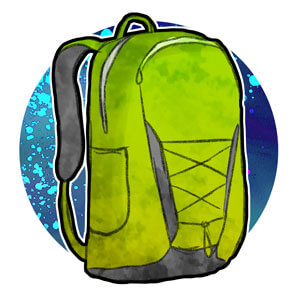
Daypacks are best suited for short tours and are also good everyday companions. They are lighter, but have a smaller capacity than backpacks designed for longer hikes. A 25-litre backpack can easily hold drinks bottles, provisions and some clothing. There is also enough space for a laptop or other work materials. Several compartments on the inside keep things tidy, and a mesh back panel ensures good ventilation.
Touring backpacks
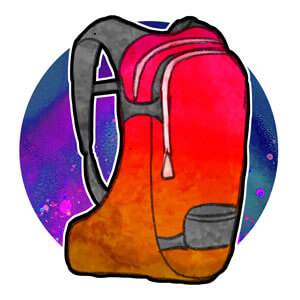
Multi-day backpacks, or touring backpacks, have a volume of about 30 to 50 litres. The strap system is therefore much more stable than that of daypacks. They are equipped with holders, for example for hiking or ski poles, and offer plenty of space for a thick change of clothes or a sleeping bag. Some models have a hydration system with a liquid container and drinking tube integrated into the backpack. For tours in the mountains or other cold regions, there are also hydration systems with frost protection.
Trekking backpacks

Trekking backpacks are designed for demanding tours over several days and have a capacity of up to 70 litres. Special expedition backpacks can even hold up to 125 litres. These backpacks are made of extremely robust, weatherproof material and offer a strap system that puts optimum strain on the back. Despite the large storage space, the user should be able to reach everywhere quickly and easily, so there are many side compartments. An aluminium frame inside provides additional stability.
Why are there special backpacks for women?
In addition to unisex models, many manufacturers also offer hiking backpacks especially for women. These ladypacks are adapted to the anatomy of women, who usually have a wider hip bone structure. The hip straps are therefore more angled and padded for a better fit. The shoulder straps are somewhat narrower and shorter and exert less pressure on the chest area. The chest strap is also higher. The back of the backpack is smaller because women usually have shorter backs, even compared to men of the same size.
Women with broader shoulders or narrow hips may be able to cope with a men’s backpack, just as male teenagers can find a comfortable alternative to a children’s backpack in a women’s backpack. From an anatomical and ergonomic point of view, a ladypack is a sensible innovation and should definitely be taken into account when planning a purchase. The more volume the hiking backpack has, the more noticeable the differences of a women’s backpack.

How should a backpack fit?
The height of the backpack must be adjusted to the user’s back length. If you determine your back length – the distance from the seventh cervical vertebra to the height of your pelvis – you can use these measurements to select a suitable backpack, which you then adjust accordingly. First, close the hip belt at the level of the hip bones. Then pull the shoulder straps forward so that the padding is on top of the shoulders. At the same time, the base of the shoulder straps must be between the shoulder blades. Load control straps are often attached to the straps and should now be at the level of the neck. With these, the load of the backpack can be shifted upwards a little, which relieves the shoulder straps. This ensures that the weight does not rest solely on the shoulders. Finally, the chest strap is closed for better support.
It is important that the load is evenly distributed inside the backpack. Order can be created through several pockets and storage space. The strap system not only supports the back posture, but also serves to distribute the weight optimally. Padding makes the backpack more comfortable to wear, and high-quality materials also play a role.
Packing your rucksack correctly
To ensure that you can carry heavy loads comfortably over a long period of time, it is important that the rucksack is packed correctly. The heaviest and sturdiest items go in first, so that they are at the bottom during transport. When carried, they will be at the level of the lower back. Many backpacks are equipped with an intermediate bottom so that the lower part can be opened separately. This allows you to unpack your sleeping bag or hiking boots without having to empty the rest of your backpack.
Drinking bottles and provisions should be stowed in the side pockets or in the upper section. This way they can be reached quickly. Heavier items could cause imbalance in these places. For optimal balance, you can carry bottles on both sides and empty them alternately.
Logically, the larger the backpack, the more weight you can carry. However, you should set a limit for your undertakings so as not to put too much strain on the backpack – or your own body – in the long term. For everyday use or small tours, daypacks should not contain more than 8 to 10 kilograms of luggage. Touring backpacks for a weekend trip or hikes lasting several days can be loaded with up to 15 kilograms, and for longer trips with trekking backpacks it should not be much more than 20 kilograms. However, these values are not set in stone, but are only guidelines. When buying the backpack, check what weight it is designed for.
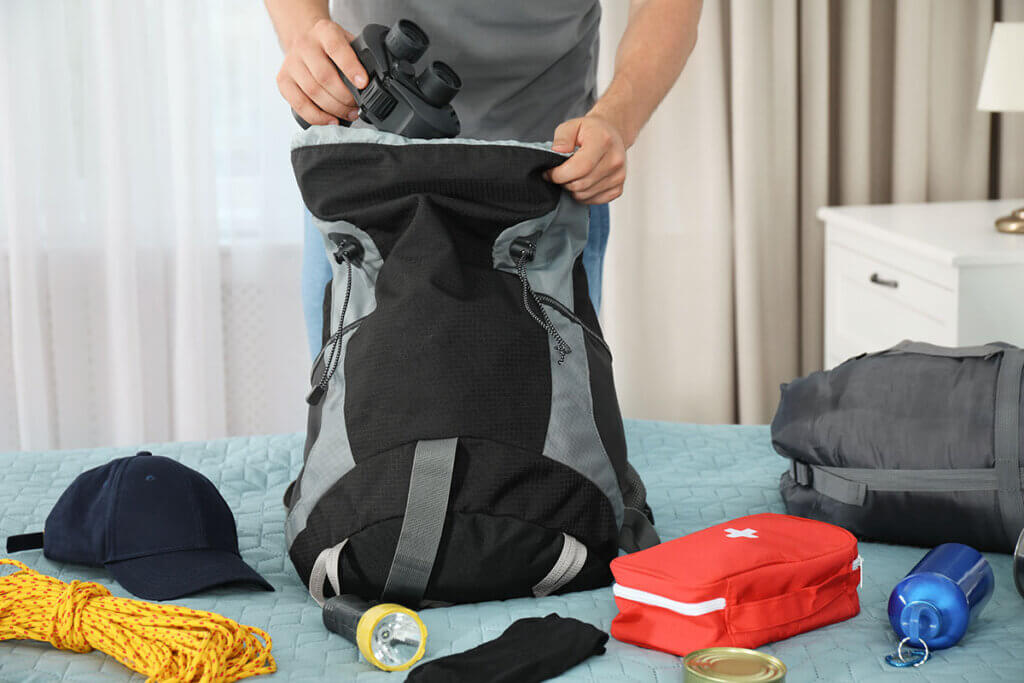
Proper cleaning of the backpack
Due to regular use in everyday life, but especially after hikes, the backpack will get dirty sooner or later. If you clean and care for it properly, you will enjoy it for a long time. However, it should never be put in the washing machine. Spinning can irreparably damage the waterproof polyurethane coating (PU) and small parts such as buckles or fasteners can also be damaged.
Instead, washing by hand with lukewarm water is recommended. If necessary, you can shake out or vacuum the interior first. Coarse dirt can be removed with a shower spray. Then soak the rucksack in water with a little detergent for a while. A chemical agent can also attack the PU coating here, so use a mild mild detergent. After soaking, you can remove dirt from the outside with a soft brush and wash the entire outside and inside with a cloth or flannel. Do not forget to wring out the straps and other foam parts thoroughly. Finally, rinse the backpack thoroughly again with the shower spray to remove all foam residues and hang it up to dry.
Ideally, wash the backpack after every tour, especially if you have sweated a lot. At the latest, if an unpleasant smell has formed or even mould has developed, it is time for a thorough cleaning. If you use and clean your hiking backpack frequently, it is advisable to use a waterproofing spray. This will make the material last longer and also protect it from UV radiation, for example. Use the waterproofing agent on a cleaned, dry backpack and spread it evenly. The exact amount and application time depend on the manufacturer.

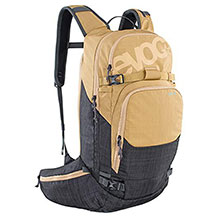
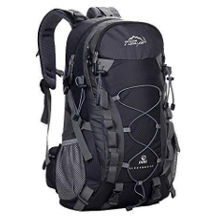
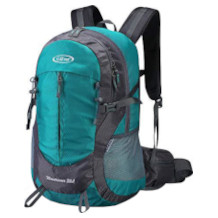
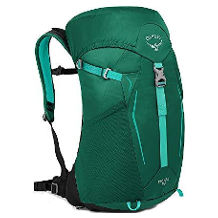
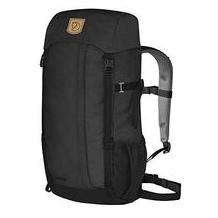
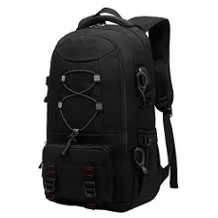
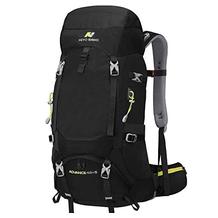
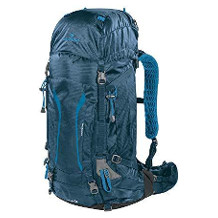

 927 reviews
927 reviews
